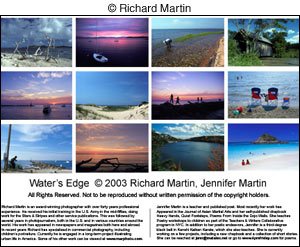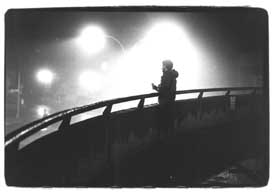
I have written before about shadows as they have appeared in various Pictures of the Month. Once more the topic arises in this month's selection, the photograph of the zebra by NYI Student Angela Gonzales of Harlingen, Texas. But, first, a digression.
Three NYI Guidelines for every photograph? Of course, and you know them as well as I do! Strong subject matter, focusing attention on the subject, and then simplifying the picture by eliminating the unnecessary and retaining, obviously, the necessary items. But this would be a good time, I think, to review those Guidelines to make certain that their meanings are clear.
What do I mean by strong subject matter? Let me say at the outset that there is no such thing as a bad subject. Conversely, no such thing as a good subject either. All subjects, everything, is fair game for the photographer's penetrating eye.
I don't think that you can have strong subject matter, whatever it is, without some serious involvement with it. Some passion. You either hate it or love it, and it doesn't matter which. You can photograph something that you hate as well as something you love because hate and love are simply opposite reactions to the same thing. But you must be careful about being indifferent to your subject. You will seldom have strong subject matter if you feel indifferent about it.
Focusing attention on the subject (your second NYI Guideline) means using the various techniques acquired from us or elsewhere.
Simplifying the picture (third Guideline) means eliminating the unnecessary and retaining the needed items. The first part of the premise is easily enough understood. Clearly, the telephone pole growing out of Aunt Clara's head is unnecessary. Some may believe that Aunt Clara's head should also be eliminated. But I urge caution here; she may be rich and planning to leave a bit of money some day.
So we generally know what is unwanted. What is harder to determine is what is truly necessary for a picture, what to leave in. When I evaluate a photograph I am bringing nearly fifty years' experience to the task at hand. And often I can sense that something should be in the picture that just isn't there. For example, a photograph of a shoreline, a cove or inlet perhaps. At the bottom of the picture is a strip of sandy beach; at the top of the picture is another strip of beach perhaps extending to a long peninsula reaching out into the water. But there is no connecting land between the upper and lower portions of the picture; I sense that something is missing because the photographer omitted it from the composition and very likely should not have done so. In short, he or she eliminated what is necessary.
Now, keeping those three NYI Guidelines firmly in mind, let's look at the zebra photograph by NYI Student Angela Gonzales.
Is the subject matter strong? Indeed it is. Ms. Gonzales must have a passion for wild animal. She could have photographed more commonplace ones such as cattle, horses, and so forth. But she made a special trip to the zoo or wild animal farm specifically to photograph a wild animal, the zebra. I can presume that the passion is real.
Choosing your point of view, your vantage point, is a powerful way to focus attention on your subject. In this case, Ms. Gonzales chose a high position to show the zebra at its best. Note the curve of the spine and neck, the airborne swish of the tail. None of these could be shown well if the photographer had stood at ground level. Note, too, the interplay of light and shadow (chiaroscuro is the term) that gives strong three dimensional feeling to the animal.
The cast shadow on the ground serves three important functions in the picture. First, the shadow underlines and emphasizes the subject in the same manner that underlining words in a sentence helps to point up those words. Second, the cast shadow on the ground helps to give a sense of depth to the picture. Judging from the length of the cast shadow to the bottom of the print we can reasonably estimate the distance that the zebra is from photographer; this presumes, of course, that the full frame has been used.
Third, cast shadows often have very interesting shapes and forms, often worth being photographed as subjects in their own right. Not all cast shadows are interesting but this one is. Ms. Gonzales could have made a fine photograph of just the cast shadow and the zebra's hooves and nothing more.
You have to realize that you have a lot of control over such cast shadows. You can pick the time of day, the kind of day, and by a careful choice of your lenses and camera-to-subject distances you can alter the shape and size of the shadow at will. That's with outdoor shadows. With indoor ones where studio lighting has been used you can change the shape and size of the shadows just by moving your lights around.
I mentioned earlier that the cast shadow emphasizes the shape of the zebra through repetition of form. Now look at the shadows at the upper part of the photograph where the shadows of the foliage form a striped pattern not unlike the stripes of the zebra itself. Furthermore, look at the swirls in the sand in front of the zebra. The striated pattern then also bears some resemblance to the zebra's stripes.
Now look at the interesting negative space made by the legs of the zebra and by its shadow.
One final point: the simplification of the picture (third NYI Guideline). The animal, its shadow, the foliage, the sand, and that's it. A beautiful composition!






